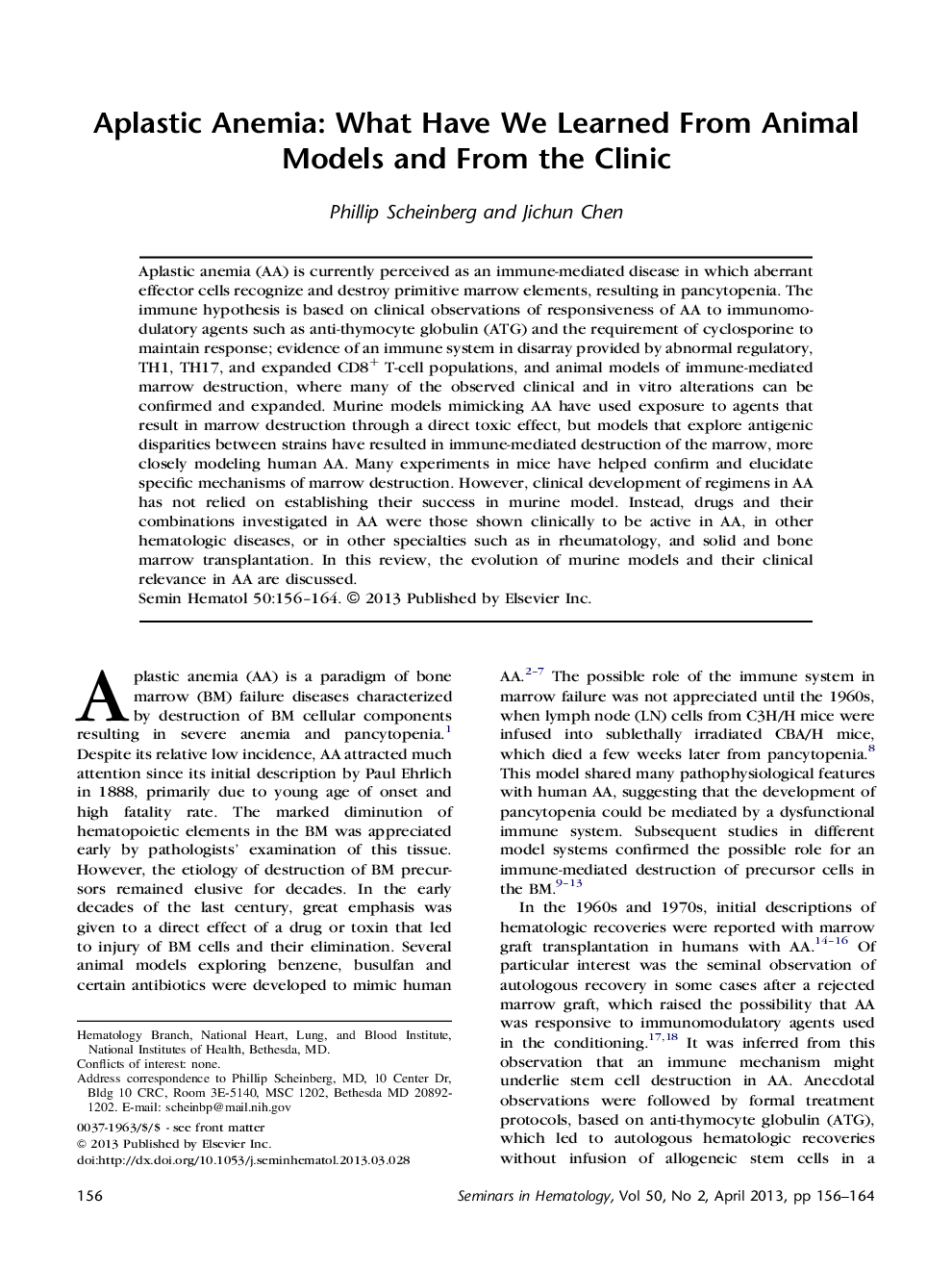| Article ID | Journal | Published Year | Pages | File Type |
|---|---|---|---|---|
| 6113785 | Seminars in Hematology | 2013 | 9 Pages |
Abstract
Aplastic anemia (AA) is currently perceived as an immune-mediated disease in which aberrant effector cells recognize and destroy primitive marrow elements, resulting in pancytopenia. The immune hypothesis is based on clinical observations of responsiveness of AA to immunomodulatory agents such as anti-thymocyte globulin (ATG) and the requirement of cyclosporine to maintain response; evidence of an immune system in disarray provided by abnormal regulatory, TH1, TH17, and expanded CD8+ T-cell populations, and animal models of immune-mediated marrow destruction, where many of the observed clinical and in vitro alterations can be confirmed and expanded. Murine models mimicking AA have used exposure to agents that result in marrow destruction through a direct toxic effect, but models that explore antigenic disparities between strains have resulted in immune-mediated destruction of the marrow, more closely modeling human AA. Many experiments in mice have helped confirm and elucidate specific mechanisms of marrow destruction. However, clinical development of regimens in AA has not relied on establishing their success in murine model. Instead, drugs and their combinations investigated in AA were those shown clinically to be active in AA, in other hematologic diseases, or in other specialties such as in rheumatology, and solid and bone marrow transplantation. In this review, the evolution of murine models and their clinical relevance in AA are discussed.
Related Topics
Health Sciences
Medicine and Dentistry
Hematology
Authors
Phillip Scheinberg, Jichun Chen,
